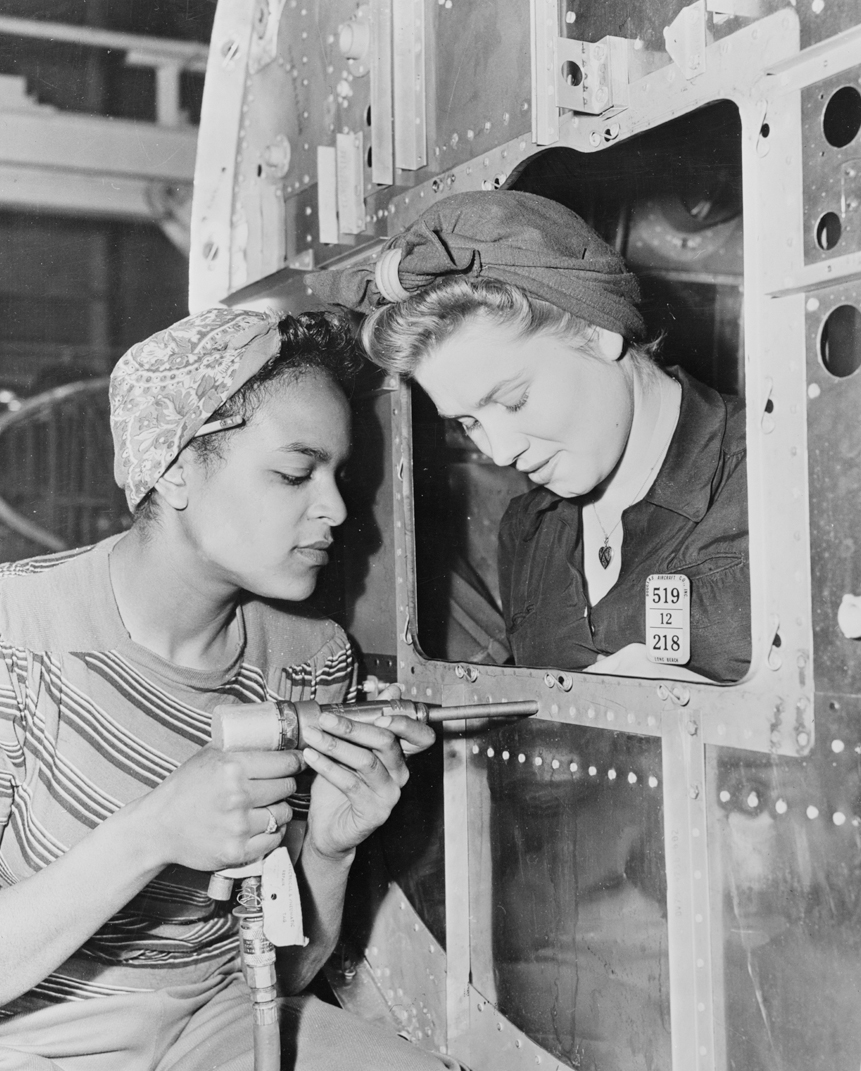Women and Families, Guns and Butter.
Printed Page 698 Chapter Chronology
Women and Families, Guns and Butter. Millions of American women gladly took their places on assembly lines in defense industries. At the start of the war, about a quarter of adult women worked outside the home, but few women worked in factories, except for textile mills and sewing industries. But wartime mobilization of the economy and the siphoning of millions of men into the armed forces left factories begging for women workers.

Government advertisements urged women to take industrial jobs by assuring them that their household chores had prepared them for work on the "Victory Line." Millions of women responded. Advertisers often referred to a woman who worked in a war industry as "Rosie the Riveter," a popular wartime term. By the end of the war, women working outside the home numbered 50 percent more than in 1939. Contributing to the war effort also paid off in wages. A Kentucky woman remembered her job at a munitions plant, where she earned "the fabulous sum of $32 a week. To us it was an absolute miracle."
The majority of married women remained at home, occupied with domestic chores and child care. But they, too, supported the war effort, planting Victory Gardens, saving tin cans and newspapers for recycling into war materiel, and buying war bonds. Many families scrimped to cope with the 30 percent inflation during the war, but men and women in manufacturing industries enjoyed wages that grew twice as fast as inflation.
The war influenced how all families spent their earnings. Buying a new washing machine or car was out of the question, since factories that formerly built them now made military goods. Many other consumer goods — such as tires, gasoline, shoes, and meat — were rationed at home to meet military needs overseas. But most Americans readily found things to buy, including movie tickets, cosmetics, and music recordings.
The wartime prosperity and abundance enjoyed by most Americans contrasted with the experiences of their hard-pressed allies. Personal consumption fell by 22 percent in Britain, and food output plummeted to just one-third of prewar levels in the Soviet Union, creating widespread hunger and even starvation.